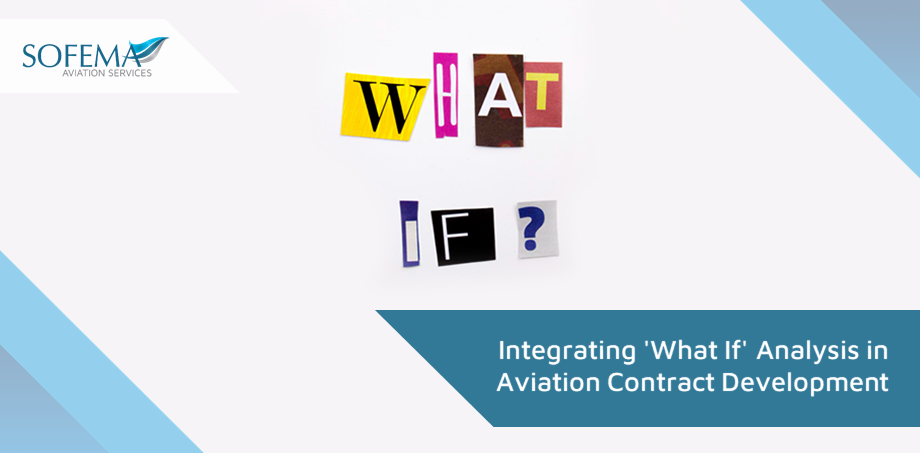Sofema Aviation Services (SAS) www.sassofia.com considers the techniques by which “What If” Analysis can be used to support the development of Aviation Contracts.
Introduction
“What If” analysis, also known as sensitivity analysis, is a critical technique used in decision-making, forecasting, and problem-solving, which helps understand the impact of different variables on a particular outcome.
- This analysis allows individuals or organizations to explore and prepare for various scenarios by adjusting one or more variables to see how those changes can affect the result.
“What if” analysis is widely used across different fields, including finance, marketing, project management, engineering, and environmental science. It is particularly valuable in strategic planning, risk management, and any situation where decisions must be made under uncertainty.
By systematically exploring different scenarios, “what if” analysis helps stakeholders understand potential risks and rewards, enabling better-prepared, flexible, and robust decision-making.
Consider the following Steps:
Define the Objective
- The first step in a “what if” analysis is to clearly define the objective or the decision to be analyzed.
- This could be anything from financial forecasting, and project planning, to evaluating strategic decisions.
Identify Key Variables
- Identify the key variables that influence the outcome of the decision.
- These variables are factors that can be changed or are uncertain, such as sales volume, costs, interest rates, or production inputs.
Create a Base Case
- Establish a base case scenario. This is the original scenario that serves as a starting point for the analysis.
– The base case should reflect the current or most likely set of conditions or assumptions.
Alter Variables Individually or in Combination
- Manipulate one or more of the identified variables to see how changes in these variables affect the outcome.
– This step is the core of the “what if” analysis, where you systematically explore different scenarios by adjusting the variables.
Analyze the Results
- For each scenario, analyze the results to understand the impact of the changes.
– This can involve comparing the outcomes to the base case to identify how sensitive the decision is to changes in variables.
Make Informed Decisions
- Use the insights gained from the analysis to make more informed decisions.
– Understanding the range of possible outcomes and their likelihood can help in choosing the best course of action or in developing contingency plans.
Tools and Techniques
- “What if” analysis can be performed using various tools and techniques, including:
Note – Spreadsheets: Excel and other spreadsheet software offer built-in features for conducting “what if” analysis, such as data tables, scenario manager, and goal seek.
Simulation Models:
- More complex decisions might require simulation models that can handle a large number of variables and possible outcomes.
Summary
Ultimately, incorporating “What If” analysis into aviation contract development fosters a culture of preparedness, agility, and informed decision-making, which is crucial in navigating the inherently uncertain and dynamic aviation industry. By doing so, organizations can not only safeguard their operations and financial interests but also seize opportunities for innovation and competitive advantage, underscoring the value of “What If” analysis as an indispensable part of modern aviation management practices.
Next Steps
Sofema Aviation Services is pleased to offer the following 2-day course – Developing and Managing Aviation Contracts in the Operations and Maintenance Environment.
Please email team@sassofia.com with questions or comments
Follow this link to our Library to find & download related documents for Free.
Tags:
Risk Management, SAS blogs, Strategic Planning, Project Management, Sensitivity Analysis, Key Variables, What If




